#frankish
Text
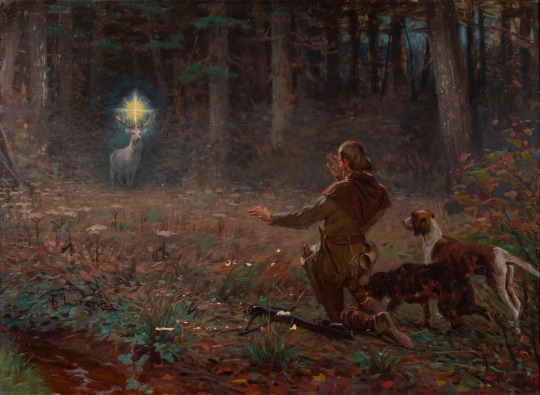
The Vision of St Hubert by Richard Lorenz
#st hubert#saint hubert#art#richard lorenz#vision#hunting#white stag#stag#deer#cross#crucifix#antlers#ardennes#forest#medieval#middle ages#christianity#christian#hounds#frankish#franks#france#belgium#germanic#history#europe#european#religion#religious#hubertus
2K notes
·
View notes
Text
King’s Field Pendant
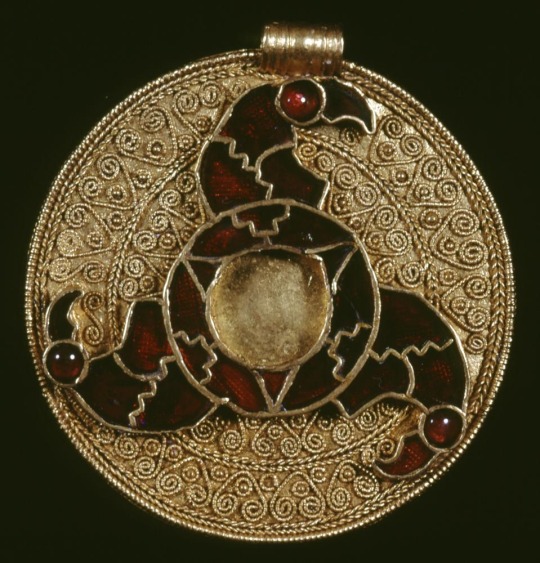
This magnificent pendant is the ultimate proof that the “Dark Ages” is an academic concept. Rather than Europe plummeting into darkness because of the “fall” of the Western Roman Empire, it’s more the lack of academic interest in the Early Middle Ages.
This Anglo-Saxon pendant was found on King’s Field (Kent) and is made of gold and garnet, but decorated extremely intricately with gabuchon, filigree and granulation. The garnet was used to form a triskele with round centre and ending in bird heads. At just 3,5 cm across, this was made by a master craftsman with materials from all over the known world.
The pendant might have been worn on a bit of string or rope, or it may have been worn as part of a glass beaded necklace. The pendant likely belonged to a woman.
The British museum, England
Museum nr. .1145.’70
Found in King’s Field - Kent, England
#merovingian#anglo saxon#viking#Vikings#frankish#carolingian#charlemagne#viking archaeology#germanic archaeology#Merovingian archaeology#Anglo Saxon archaeology#field archaeology#archaeology#field archaeologist#frisian#frisian archaeology#Germanic#jewelry#almandine#garnet#roman empire#western Roman Empire#germanic mythology#viking mythology#Norse mythology#pagan#kent#england#anglo Saxon England#paganism
821 notes
·
View notes
Text
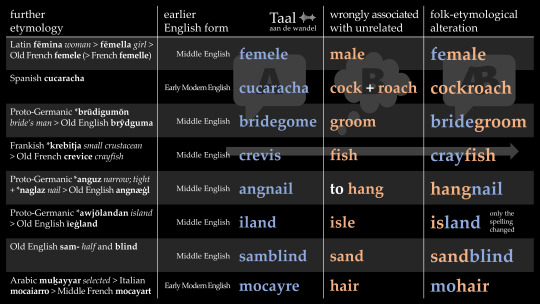
Cockroach stems from Spanish cucaracha. When cucaracha was borrowed, it was opaque to English speakers. Trying to rationalise it, they associated it with the familiar words cock and roach and changed its pronunciation. This type of change is called folk etymology. Here are more examples.
#historical linguistics#linguistics#language#etymology#english#latin#french#spanish#lingblr#proto-germanic#old english#arabic#middle french#frankish#old french#folk etymology
268 notes
·
View notes
Text
Archaeological things that make me happy
Early medieval Germanic Buckets

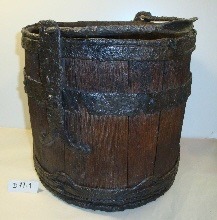

For reasons not really known, the Early Germans attributed an unknown importance to buckets. Both in Anglo Saxon and Merovingian graves can such buckets be found. I’d even call them pretty, and they’re 1500 years old.
1) RMO Leiden, object nr Rh763F, Rhenen-Utrecht, The Netherlands
2) KMKG Brussels, object nr D0077-001, Tienen-Vlaams Brabant, Belgium
3) The British Museum London, object nr 1939,1010.119 , Sutton Hoo - Suffolk, England
#field archaeology#anglos Saxon#germanic#early Germans#Merovingian#Frankish#charlemagne#archaeology#field archaeologist#Sutton hoo
240 notes
·
View notes
Text
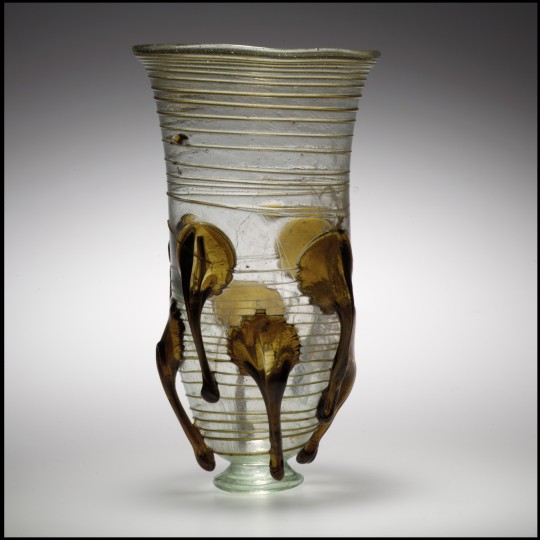
Glass beaker, Frankish, 5th-6th century AD
from The Metropolitan Museum of Art
69 notes
·
View notes
Text

LORSCH GOSPELS. This ivory book cover illustrates late imperial scenes adapted to a Christian theme. It is a striking example of early 9th Century Carolingian art. The front panels are in the collection of the Victoria and Albert Museum.
The manuscript, written in Latin between 778 and 820, roughly coincides with the period of Charlemagne's rule over the Frankish Empire.
The attempt in Northern Europe to revive and emulate classical Mediterranean art forms and styles resulted in a blending of classical and Northern elements in a sumptuous and dignified style. The Northern confidence representing the human figure set the stage for the rise of Romanesque art and eventually Gothic art in the West. The Carolingian era is part of the period in medieval art sometimes called the "Pre-Romanesque". After a rather chaotic interval following the Carolingian period, the new Ottonian dynasty revived Imperial art from about 950, building on and further developing Carolingian style in Ottonian art.
source
#beautiful books#book blog#books books books#book cover#books#incunabula#gospel#christian bible#carolingian#9th century#ivory#charlemagne#frankish
60 notes
·
View notes
Text
A metal detectorist has unearthed a stunning gold ring in Denmark, potentially unveiling a new chapter in European history. This rare find suggests the existence of an unknown princely family with ties to the Merovingian Kingdom of France! This could change our understanding of ancient European alliances. A true testament to the power of amateur archaeology!
24 notes
·
View notes
Note
Do you know the etymology of the word pocket
I did not, but after some research, here it is!
Pocket comes from the Anglo-Norman poket, from the Old North French poquet. Poquet itself originated from the Frankish *pokka, meaning pouch, which was of Germanic origins.
* Indicates a reconstructed word
46 notes
·
View notes
Text


The more I study history, the better I understand the sense of fan art and fan fiction. Sometimes extraordinary bright personalities appear to the world - it seems like they are beyond the boundaries of weak human nature, and it makes them incredibly charming. Of course, we rely on the chronicles of contemporaries - these materials are very scarce and not always objective… But even if we take into consideration possible exaggerations and biases, still it is hard to imagine how a young guy could avoid the elementary temptations of his royal status, not fall into despair due to a crippling illness and lack of intimate relationships, and yet had the courage, wisdom, and charisma to inspire his warriors and ensure an unconditional victory, even when a significant power advantage was on the side of the enemy. Is it an idealization or a reliable description, I don’t know. In any case, such a legendary character always finds an honorable place in art (in movies, paintings, stories, etc.).
Here is my tiny job too. The reference image is from the Kindom of Heaven movie, where Edward Norton played masterfully as usual.
Чем глубже лезешь в историю, тем лучше понимаешь художников фанартов и авторов фан-фикшан. Порой миру являются невероятно светлые образы, выходящие за границы человеческой природы и влюбляющие в себя моментально. Конечно, мы опираемся на хроники современников — материалы эти весьма скудны и не всегда объективны… И, тем не менее, сложно представить, как в юном возрасте можно избежать всяческих пороков и искушений властью, не впасть в отчаяние из-за калечащей болезни и отсутствия интимных отношений, и при этом обладать такой отвагой, мудростью и харизмой, чтобы вдохновлять своих воинов и обеспечивать безоговорочную победу, даже когда значительный силовой перевес находится на стороне противника. Идеализация или же все-таки достоверное описание, не знаю. Но в любом случае, подобные легендарные персонажи нередко получают достойное место в искусстве (в фильмах, картинах, рассказах и т. д.). Чего стоит один только Kindom of Heaven, где Эдвард Нортон изрядно постарался. Страсти в фэндомах не утихают до сих пор.
#baldwin iv#baldwin 4#baudouin#baldwiniv#baldwin4#king#monarch#crusader#jerusalem#the leper king#leper#leprosy#brave#сhristian#kindom#kindom of heaven#koh#edwardnorton#fanart#frankish#royal#anjou#knight#noble#балдуин iv#балдуин 4#русский тамблер#русскоязычный#проказа#прокаженный
23 notes
·
View notes
Photo
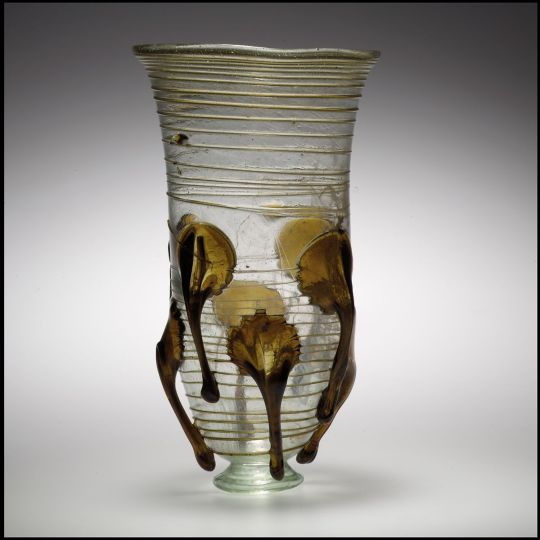
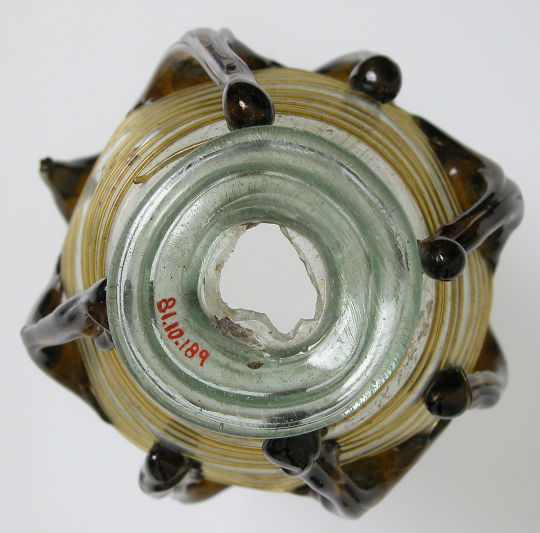

A “claw beaker” -- i.e., a glass vessel decorated with little “claws” -- from the Frankish kingdom, ca. 500 CE.
{WHF} {HTE} {Medium}
67 notes
·
View notes
Text
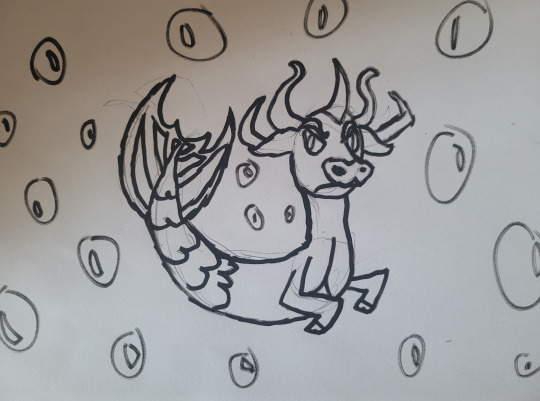
Day 3 of Inktober, a Frankish Creature of a Mer-Bull, known as the "Quinotaur".
A Mer-Bull sea beast that was mentioned in the 7th Century Chronicle, "Chronicle of Fredegar". It was known as "The Beast of Neptune" to resemble the Ancient Sacred Animal of Bulls (no doubt, but closer to the Minotaur and even Jupiter in his Bull form).
Held to attack the Wife of King Chlodio to father Meroveus and even sire the line of many Kings of Merovingian. The Name behind it means "Bull with Five Horns" but it is unknown rather if both Legends (Neptune/Poseidon and The Minotaur) were behind this Mythical Creature to inspire the Christian Author. The Clear Latin behind its name does not indicate whatever it translates of some Frankish creature or coining.
Quinotaur (c) Frankish Mythology
2 notes
·
View notes
Text

Charlemagne's Vision (L'Épine's The Legend of Croquemitaine) by Gustave Doré
#charlemagne#art#gustave doré#legend of croquemitaine#chivalry#knights#knight#franks#frankish#history#medieval#middle ages#france#roland#the legend of croquemitaine#mitaine#ernest l'épine#ernest l'epine#the days of chivalry#crusade#crusades#chivalric romance#carolingian#germanic#europe#european#christianity#christian#emperor#christendom
177 notes
·
View notes
Text
Birka’s warrior woman
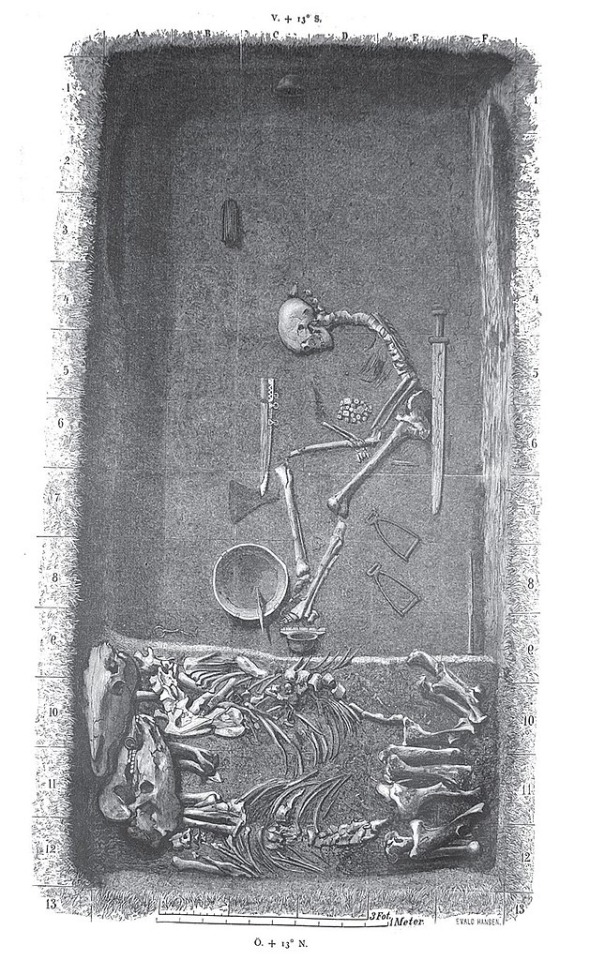
This grave was found on Birka (Björko) in 1878. The grave contained human remains, remains from two horses, bowls, weaponry, a shield(boss), a chess game and saddle stirrups. The burial room was built in wood. Most likely the person was buried seated, with the bones collapsing on themselves. Some remains of textile were found.
The assumption that the person was a man was quickly made and the “high status burial of a Viking warrior” was often cited in research.
It would take until 2017 when both osteological and genetic testing proved the person was in fact a woman. To this day it is the only genetically and archaeologically proven female warrior from the Viking age.
The reason I say genetically AND archaeologically is because it is assumed that gender was a very loose concept in the Germanic age. Biological gender wasn’t necessarily denied, but there are indications that people would take on “the role” of the other gender. A woman could “step up” as a man’s son, as seen in blood feud tales where the patriarch is killed, but if there is no son to avenge him, a woman would “take up the role” and set out, armed for revenge.
Biologically male individuals have been found with “female” attributes such as beads, pendants and certain decoration styles.
From the limited amount of research there is, it seems possible that cross-dressing, gender fluidity and gender role exchange were very normal before mass christianization.
Excavated by: Hjalmar Stolpe
Found in: Birka, Björko, Ekerö - Sweden
Drawing by: Hjalmar Stolpe
#frankish#merovingian#viking archaeology#archaeology#carolingian#charlemagne#field archaeology#viking mythology#merovingian archaeology#germanic mythology#valkyrie#Walküre#Wagner#richard wagner#norse mythology#anglo saxon#field archaeologist#frisian#viking#vikings#germanic#germanic folklore#germanic archaeology#odin#wodan#anglo saxon archaeology#history#jewelry#norse
293 notes
·
View notes
Text
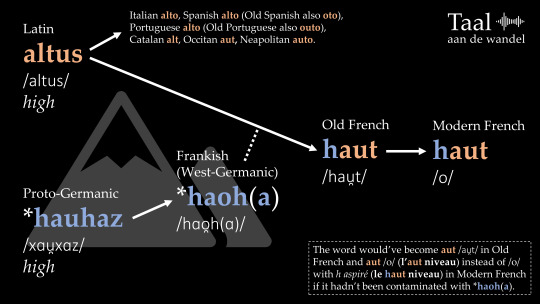
The French word 'haut' (high) arose as a contamination of two words: - the descendant of Latin 'altus' (high);
- Frankish (West-Germanic) 'haoh(a)' (high).
This contaminiation took place in a time when part of the population of modern-day northern France and southern Belgium was bilingual.
#historical linguistics#linguistics#language#etymology#contamination#proto-germanic#west-germanic#frankish#old french#french
58 notes
·
View notes
Text
Finished my first tablet woven band. It’s longer than I expected for an inklette loom (the small version of an Inkle loom). Now i need to find a use for it tho 😅


Already thinking about a more historical project. Hallstatt maybe?
@cyreneduvent
#archaeology#history#field archaeologist#tablet weaving#card weaving#historical textiles#tablet woven band#historical fashion#Viking#celtic#Germanic#frankish#merovingian#hallstatt#iron age
62 notes
·
View notes
Link
A playlist of the presentations at the past weekend’s Gaulish convention!
Myth is Not Religion by Aliakai
Gaulish Runas System from Nemeton Dumnantu
Divine Pairings in Gaulish Polytheism by Nertatis
Frankish Polytheism/Heathenry presentation by the TFA
Abnoda Gaulish/Celtic Goddess of the Wilds by Tricunos
Ritual for Gallo-Roman Mercuralia by Viducos/Deomercurios
Stone age cosmology (neolithic origin for cernunnos??) by Beroki
Secrets of the Rhaetians (IRON AGE ALPS SUN WORSHIPPERS) by Renotauros
Travel Altars & Con wrap up with Reno again
#aliakai#runes#runas#gaulish#Gaulish Polytheist#Gaulish Polytheism#gaulish pagan#frankish#frankish heathenry#heathenry#abnoba#diana#gallo-roman#mercury#mercuarlia#cernunnos#cerunnos*#rhaetians#sun worship#altars#paganism#pagan#polytheism#convention#sirona#taranis#taranos#neopagan#neopaganism#myths
24 notes
·
View notes